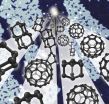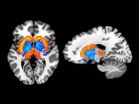(Press-News.org) SALT LAKE CITY, Utah, Sept. 9, 2014 – Myriad Genetics, Inc. (Nasdaq: MYGN) today presented results from a pivotal clinical utility study of the Myriad myPath™ Melanoma test at the 2014 College of American Pathologists (CAP) annual meeting in Chicago, Ill. Myriad myPath Melanoma is a novel diagnostic test that differentiates malignant melanoma from benign skin lesions with greater than 90 percent accuracy and helps physicians deliver a more objective and confident diagnosis for patients.
This study evaluated the impact of the myPath Melanoma diagnostic test on expert dermatopathologists' diagnoses and treatment recommendations for patients. The analysis included 687 cases of pigmented skin lesions submitted by 42 leading dermatopathologists in the United States. These melanoma experts were asked to document their diagnosis, level of confidence, any further testing and recommendations for treatment both before and after receiving the myPath test results.
The results show that when the myPath Melanoma test score was provided to the dermatopathologists, they revised their treatment recommendations in 35 percent of cases. Additionally, the myPath test score led to a 76 percent reduction in "indeterminate" diagnoses. These data strongly support the integration of myPath Melanoma into clinical practice to improve the diagnosis of melanoma and enhance patient care.
"This clinical utility study demonstrates how the myPath Melanoma test can be successfully incorporated into clinical care to improve the treatment of malignant melanoma," said Loren Clarke, M.D., vice president of Medical Affairs at Myriad Genetic Laboratories. "Myriad myPath Melanoma provides objective information to answer an important clinical question: Does my patient have a melanoma that requires surgery or medical intervention or is the lesion a harmless mole that needs to be watched?"
INFORMATION:
About Myriad myPath Melanoma Testing
The Myriad myPath Melanoma test is a clinically validated gene expression test designed to differentiate malignant melanoma from benign nevi across all major melanoma subtypes. The Myriad myPath Melanoma test is a unique test of 23 genes that provides valuable, additive diagnostic information unavailable from any other method – information that can help physicians deliver a more confident diagnosis.
Melanoma is the most serious type of skin cancer. According to the American Cancer Society, about 76,000 new melanomas are diagnosed each year and more than 9,000 people die from the disease annually. Each year in the United States, there are approximately 1.5 million skin biopsies performed specifically for the diagnosis of melanoma, and approximately 14 percent or 210,000 biopsies are classified as indeterminate, meaning that the dermatopathologist cannot confidently determine whether the cells are benign or malignant. For more information visit: http://www.isthismelanoma.com and http://www.myriadpro.com/melanoma.
About Myriad Genetics
Myriad Genetics is a leading molecular diagnostic company dedicated to making a difference in patients' lives through the discovery and commercialization of transformative tests to assess a person's risk of developing disease, guide treatment decisions and assess risk of disease progression and recurrence. Myriad's molecular diagnostic tests are based on an understanding of the role genes play in human disease and were developed with a commitment to improving an individual's decision making process for monitoring and treating disease. Myriad is focused on strategic directives to introduce new products, including companion diagnostics, as well as expanding internationally. For more information on how Myriad is making a difference, please visit the Company's website: http://www.myriad.com/.
Myriad, the Myriad logo, BART, BRACAnalysis, Colaris, Colaris AP, myPath, myRisk, myRisk Hereditary Cancer, myChoice, myPlan, BRACAnalysis CDx, HRD, Vectra DA and Prolaris are trademarks or registered trademarks of Myriad Genetics, Inc. in the United States and foreign countries. MYGN-F, MYGN-G
Safe Harbor Statement
This press release contains "forward-looking statements" within the meaning of the Private Securities Litigation Reform Act of 1995, including statements relating to the presentation of the Myriad myPath Melanoma test clinical study data at the 2014 CAP Annual Meeting; the effectiveness of Myriad myPath testing to accurately differentiate malignant melanoma from benign lesions and help physicians deliver a more objective and confident diagnosis; the Company's belief that the Myriad myPath Melanoma test represents a significant advancement in the prompt and accurate diagnosis of potentially fatal melanoma; the clinical use of the Myriad myPath Melanoma test as an adjunct to standard pathology techniques in the evaluation of pigmented skin lesions, particularly in difficult-to-classify cases; the Company's belief that the Myriad myPath Melanoma test will substantially improve the standard of care for patients with melanoma; and the Company's strategic directives under the caption "About Myriad Genetics." These "forward-looking statements" are based on management's current expectations of future events and are subject to a number of risks and uncertainties that could cause actual results to differ materially and adversely from those set forth in or implied by forward-looking statements. These risks and uncertainties include, but are not limited to: the risk that sales and profit margins of our existing molecular diagnostic tests and pharmaceutical and clinical services may decline or will not continue to increase at historical rates; risks related to changes in the governmental or private insurers reimbursement levels for our tests or our ability to obtain reimbursement for our new tests at comparable levels to our existing tests; the risk that we may be unable to develop or achieve commercial success for additional molecular diagnostic tests and pharmaceutical and clinical services in a timely manner, or at all; the risk that we may not successfully develop new markets for our molecular diagnostic tests and pharmaceutical and clinical services, including our ability to successfully generate revenue outside the United States; the risk that we may not be successful in transitioning from our existing product portfolio to our new products, such as our myRisk Hereditary Cancer test, which represents the next generation of our existing hereditary cancer franchise; the risk that we may not be able to generate sufficient revenue from our existing tests and our new tests or develop new tests; the risk that licenses to the technology underlying our molecular diagnostic tests and pharmaceutical and clinical services and any future tests are terminated or cannot be maintained on satisfactory terms; risks related to delays or other problems with manufacturing our products or operating our laboratory testing facilities; risks related to public concern over genetic testing in general or our tests in particular; risks related to regulatory requirements or enforcement in the United States and foreign countries and changes in the structure of the healthcare system or healthcare payment systems; risks related to our ability to obtain new corporate collaborations or licenses and acquire new technologies or businesses on satisfactory terms, if at all; risks related to our ability to successfully integrate and derive benefits from any technologies or businesses that we license or acquire; risks related to increased competition and the development of new competing tests and services; risks related to our projections about the potential market opportunity for our products; the risk that we or our licensors may be unable to protect or that third parties will infringe the proprietary technologies underlying our tests; the risk of patent infringement claims or challenges to the validity of our patents; risks related to changes in intellectual property laws covering our molecular diagnostic tests and pharmaceutical and clinical services and patents or enforcement in the United States and foreign countries, such as the Supreme Court decision in the lawsuit brought against us by the Association for Molecular Pathology et al.; risks of new, changing and competitive technologies and regulations in the United States and internationally; and other factors discussed under the heading "Risk Factors" contained in Item 1A in our most recent Annual Report on Form 10-K filed with the Securities and Exchange Commission, as well as any updates to those risk factors filed from time to time in our Quarterly Reports on Form 10-Q or Current Reports on Form 8-K. All information in this press release is as of the date of the release, and Myriad undertakes no duty to update this information unless required by law.
Myriad myPath™ melanoma test reduced indeterminate cases by 76 percent
The test also Ccanged treatment in 35 percent of cases
2014-09-09
ELSE PRESS RELEASES FROM THIS DATE:
Biologists try to dig endangered pupfish out of its hole
2014-09-09
Berkeley — Scientists estimate that fewer than 100 Devils Hole pupfish remain in their Mojave Desert home, but a conservation biologist at the University of California, Berkeley, is giving important guidance in the efforts to rescue them by establishing a captive breeding program.
Considered the world's rarest fish, with one of the smallest geographic ranges of any wild vertebrate, the tiny pupfish (Cyprinodon diabolis) – about one-inch long as an adult – neared extinction in spring 2013 when populations dropped to an all-time low of 35 observable pupfish. While more ...
Tracing water channels in cell surface receptors
2014-09-09
G protein-coupled receptors (GPCRs) are the largest class of cell surface receptors in our cells, involved in signal transmission across the cell membrane. One of the biggest questions is how a signal recognized at the extracellular side of a GPCR induces a sequence of conformational changes in the protein and finally evokes an intracellular response. EPFL scientists have now used computer modeling to reveal in molecular detail the structural transitions that happen inside GPCRs during the signal transduction process. They discovered that a central step in the trans-membrane ...
Shift in Arabia sea plankton may threaten fisheries
2014-09-09
A growing "dead zone" in the middle of the Arabian Sea has allowed plankton uniquely suited to low-oxygen water to take over the base of the food chain. Their rise to dominance over the last decade could be disastrous for the predator fish that sustain 120 million people living on the sea's edge.
Scientists at Columbia University's Lamont-Doherty Earth Observatory and their colleagues are the first to document the rapid rise of green Noctiluca scintillans, an unusual dinoflagellate that eats other plankton and draws energy from the sun via microscopic algae living within ...
Buckyballs and diamondoids join forces in tiny electronic gadget
2014-09-09
Menlo Park, Calif. — Scientists have married two unconventional forms of carbon – one shaped like a soccer ball, the other a tiny diamond – to make a molecule that conducts electricity in only one direction. This tiny electronic component, known as a rectifier, could play a key role in shrinking chip components down to the size of molecules to enable faster, more powerful devices.
"We wanted to see what new, emergent properties might come out when you put these two ingredients together to create a 'buckydiamondoid,'" said Hari Manoharan of the Stanford Institute for Materials ...
Eating habits, body fat related to differences in brain chemistry
2014-09-09
People who are obese may be more susceptible to environmental food cues than their lean counterparts due to differences in brain chemistry that make eating more habitual and less rewarding, according to a National Institutes of Health study published in Molecular Psychiatry.
Researchers at the NIH Clinical Center found that, when examining 43 men and women with varying amounts of body fat, obese participants tended to have greater dopamine activity in the habit-forming region of the brain than lean counterparts, and less activity in the region controlling reward. Those ...
Study sheds light on how stem cells can be used to treat lung disease
2014-09-09
Munich, Germany: A new study has revealed how stem cells work to improve lung function in acute respiratory distress syndrome (ARDS).
Previous studies have shown that stem cells can reduce lung inflammation and restore some function in ARDS, but experts are not sure how this occurs. The new study, which was presented at the European Respiratory Society's International Congress today (09 September 2014), brings us a step closer to understanding the mechanisms that occur within an injured lung.
ARDS is a life-threatening condition in which the efficiency of the lungs ...
Birth measurements could predict lung health in teen years
2014-09-09
Munich, Germany: A new study has found that factors, such as birth weight, gestational age at birth and lung function, growth and other measures at 8 years, can be used to predict lung function during mid to late teenage years.
The study, presented at the European Respiratory Society (ERS) International Congress in Munich today (9 September 2014), is part of a growing area of research aiming to understand how early life factors have an impact on the development of disease into adulthood.
Data out of the Avon Longitudinal Study of Mothers and Children (ALSPAC) from ...
Idiopathic pulmonary fibrosis cases linked with asbestos exposure
2014-09-09
Munich, Germany: A proportion of idiopathic pulmonary fibrosis (IPF) cases may be linked with asbestos exposure, according to the results of a new study. If confirmed, the findings would mean that current treatment strategies need to be altered as people with a history of asbestos exposure are not currently able to access new treatments for IPF.
The research, which was presented at the European Respiratory Society's International Congress today (09 September 2014), provided new mortality data for IPF, asbestosis and mesothelioma.
Asbestosis is the name given to the ...
Milestone reached in work to build replacement kidneys in the lab
2014-09-09
WINSTON-SALEM, N.C. – Sept. 9, 2014 – Regenerative medicine researchers at Wake Forest Baptist Medical Center have addressed a major challenge in the quest to build replacement kidneys in the lab. Working with human-sized pig kidneys, the scientists developed the most successful method to date to keep blood vessels in the new organs open and flowing with blood. The work is reported in journal Technology.
"Until now, lab-built kidneys have been rodent-sized and have functioned for only one or two hours after transplantation because blood clots developed," said Anthony ...
Intervention in 6-month-olds with autism eliminates symptoms, developmental delay
2014-09-09
Treatment at the earliest age when symptoms of autism spectrum disorder (ASD) appear – sometimes in infants as young as 6 months old – significantly reduces symptoms so that, by age 3, most who received the therapy had neither ASD nor developmental delay, a UC Davis MIND Institute research study has found.
The treatment, known as Infant Start, was administered over a six-month period to 6- to 15-month-old infants who exhibited marked autism symptoms, such as decreased eye contact, social interest or engagement, repetitive movement patterns, and a lack of intentional communication. ...
LAST 30 PRESS RELEASES:
SIMJ announces global collaborative book project in commemoration of its 75th anniversary
Air pollution exposure and birth weight
Obstructive sleep apnea risk and mental health conditions among older adults
How talking slows eye movements behind the wheel
The Ceramic Society of Japan’s Oxoate Ceramics Research Association launches new international book project
Heart-brain connection: international study reveals the role of the vagus nerve in keeping the heart young
Researchers identify Rb1 as a predictive biomarker for a new therapeutic strategy in some breast cancers
Survey reveals ethical gaps slowing AI adoption in pediatric surgery
Stimulant ADHD medications work differently than thought
AI overestimates how smart people are, according to HSE economists
HSE researchers create genome-wide map of quadruplexes
Scientists boost cell "powerhouses" to burn more calories
Automatic label checking: The missing step in making reliable medical AI
Low daily alcohol intake linked to 50% heightened mouth cancer risk in India
American Meteorological Society announces Rick Spinrad as 2026 President-Elect
Biomass-based carbon capture spotlighted in newly released global climate webinar recording
Illuminating invisible nano pollutants: advanced bioimaging tracks the full journey of emerging nanoscale contaminants in living systems
How does age affect recovery from spinal cord injury?
Novel AI tool offers prognosis for patients with head and neck cancer
Fathers’ microplastic exposure tied to their children’s metabolic problems
Research validates laboratory model for studying high-grade serous ovarian cancer
SIR 2026 delivers transformative breakthroughs in minimally invasive medicine to improve patient care
Stem Cell Reports most downloaded papers of 2025 highlight the breadth and impact of stem cell research
Oxford-led study estimates NHS spends around 3% of its primary and secondary care budget on the health impacts of heat and cold in England
A researcher’s long quest leads to a smart composite breakthrough
Urban wild bees act as “microbial sensors” of city health.
New study finds where you live affects recovery after a hip fracture
Forecasting the impact of fully automated vehicle adoption on US road traffic injuries
Alcohol-related hospitalizations from 2016 to 2022
Semaglutide and hospitalizations in patients with obesity and established cardiovascular disease
[Press-News.org] Myriad myPath™ melanoma test reduced indeterminate cases by 76 percentThe test also Ccanged treatment in 35 percent of cases



